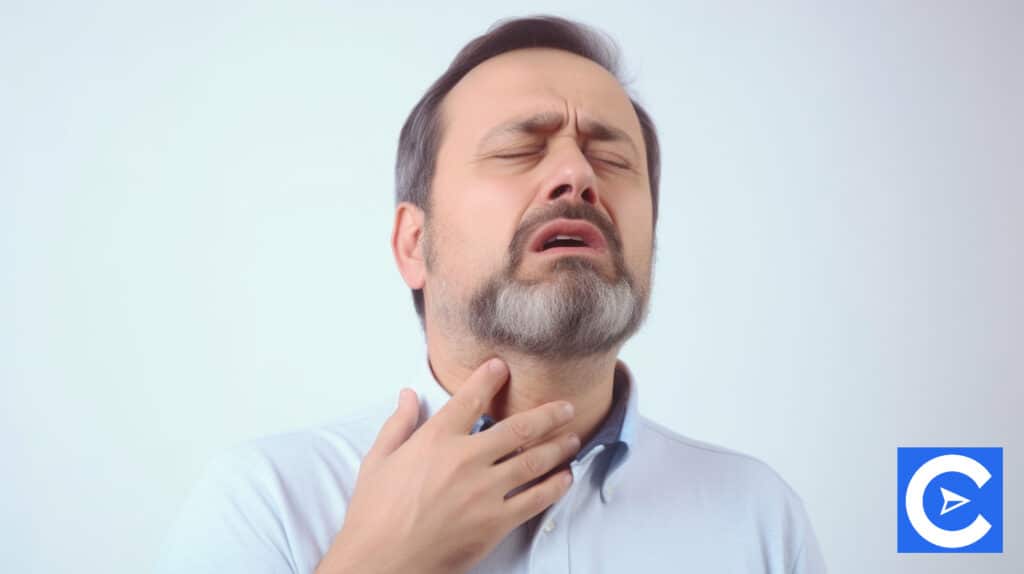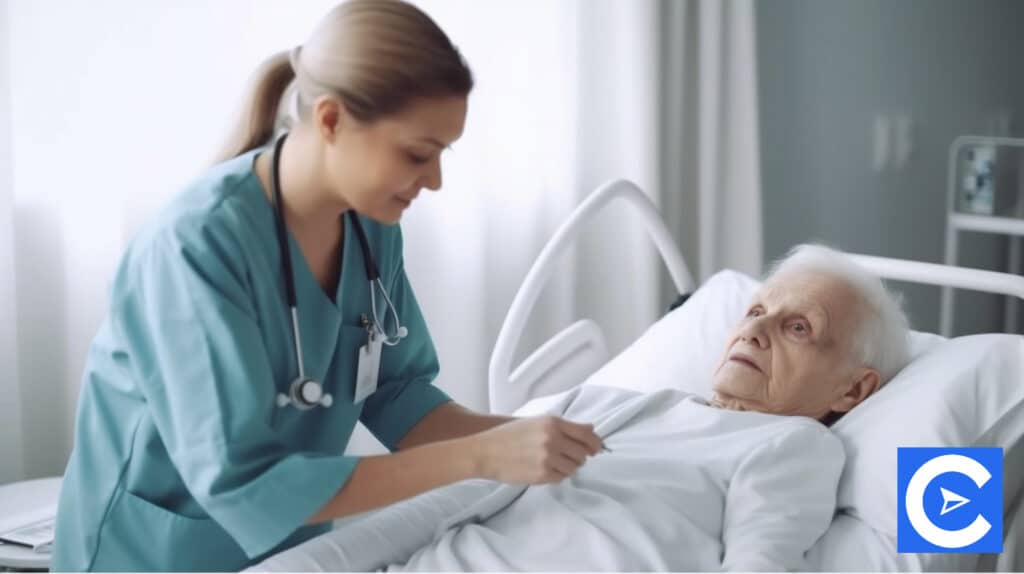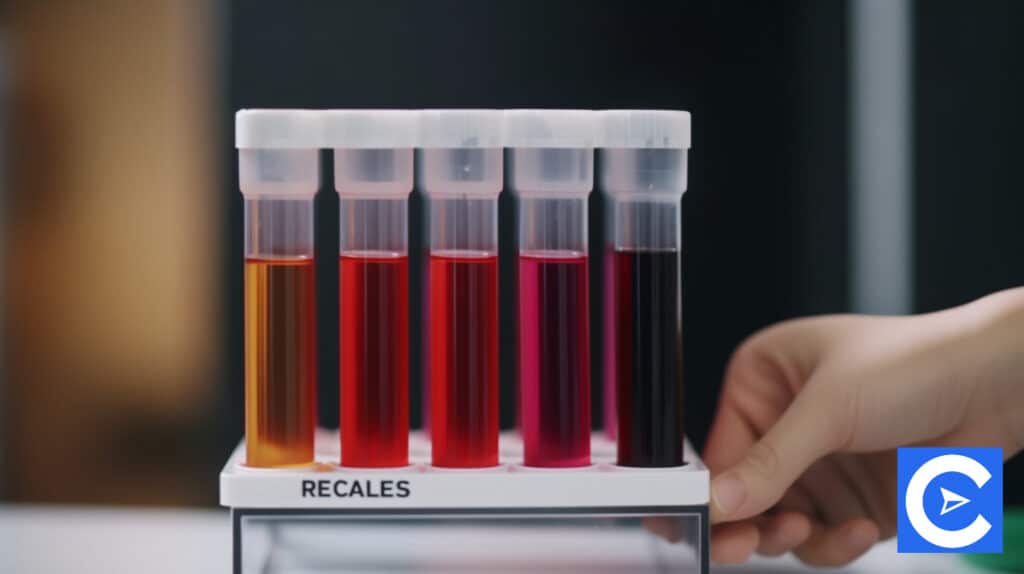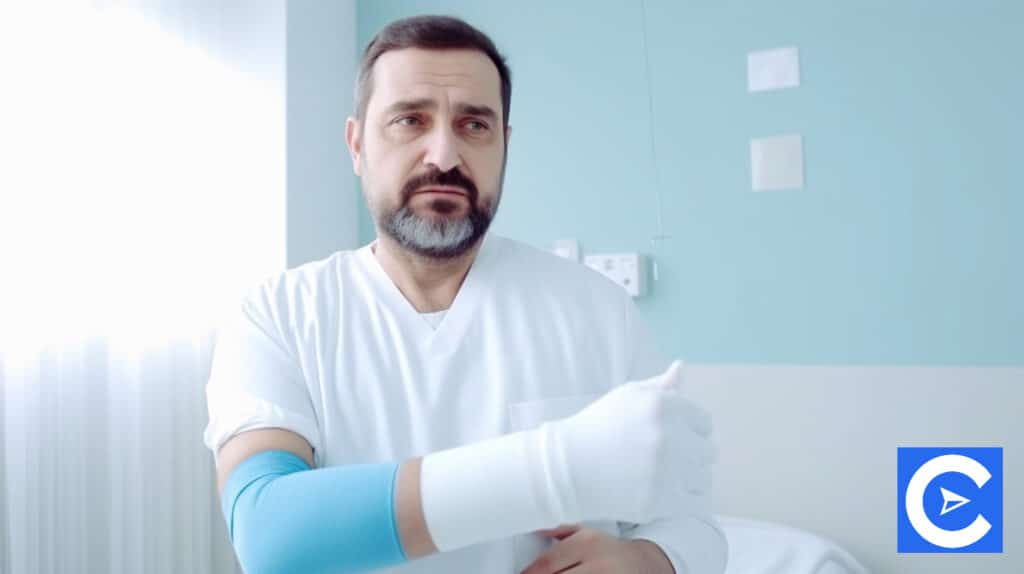Other Free NCLEX RN Study Guides:
There are 8 Modules in NCLEX RN Study Guide. Here you can navigate all the NCLEX RN Study guide modules.
- NCLEX Study Guide Home
- Module 1 | Managing Care Of the Patient
- Module 2 | Overall Safety and Control of Infections
- Module 3 | The promotion of health and maintenance
- Module 4 | Integrity in psychosocial functioning
- Module 5 | Providing Basic Care and Ensuring Patient Comfort
- Module 6 | Therapies: Pharmacological and parenteral
- Module 7 | Potential risk reduction
- Module 8.1 | Adapting physiologically
- Module 8.2 | Adapting physiologically
- Module 8.3 | Adapting physiologically
let’s get started right away.
Adrenal crisis and Diabetes mellitus

Diabetes mellitus type 1 and 2
Patients suffering from diabetes will either have type 1 or 2.
Type 1 diabetics will not produce insulin and this is a result of the pancreatic beta cells being destroyed in their bodies.
Type 2 diabetics are generally older and have a defect in insulin secretion as well as being insulin resistant.
The symptoms of type 1 are:
- Polydipsia and polyuria that’s pronounced
- Either obese or suffered recent weight loss
- Ketoacidosis
The symptoms of type 2 are:
- Obesity
- Absent or mild polyuria and polydipsia
- Ketoacidosis
- Hypertension
- Androgen mediated problems
Treatment for type 1 includes:
- Insulin used to control blood sugar
- Around one to four times per day, monitoring blood glucose levels
- Diet control and watching carbohydrate intake
- Exercise
Treatment for type 2 includes:
- Oral medications
- Glucose monitoring
- Exercise
- Diet
We’ve mentioned ketoacidosis above and you can read up on this in your coursework to get a better understanding of what it entails.
Diabetes insipidus (DI)
A deficiency of ADH, or antidiuretic hormone as well as vasopressin can cause DI.
Meningitis, encephalitis, surgical ablation, pituitary irradiation, metastatic tumors, head trauma, and brain tumors can also cause it to develop as a secondary complication.
Symptoms include:
- Polydipsia
- Polyuria
- Dehydration and hypovolemia
In terms of diagnosis, the easiest way to do this is through a water deprivation test.
DI can be treated with hormonal and nonhormonal drugs.
Syndrome of inappropriate secretion of antidiuretic hormone (SIADH)
SIADH is related to the pituitary gland, and particularly the hypersecretion thereof.
As a result, a patient will suffer from fluid retention because the kidneys reabsorb fluids.
As a result, concentrated urine is produced because the sodial level decreases because of the retention of fluids.
As a result of central nervous systems disorders, such as tumors or brain trauma, SIADH can result.
Other disorders can trigger it as well, for example, lung disorders, pneumothorax, tumors on organs, and even acute pneumonia.
Symptoms include crackles on auscultation, anorexia, edema, dyspnea, irritability, camps, stupor, and even seizures due to sodium depletion.
Treatment of the underlying cause is necessary, but patients should be monitored for correct fluid volume excess, be given electrolytes, and take precautions against seizures.
Adrenal crisis
Also known as acute adrenal insufficiency, this can result from Addison’s disease.
Sepsis, shock, adrenal hemorrhage, cortisone withdrawal, and anticoagulation complications are among the factors that can precipitate it.
Not only those with Addison’s disease can get it, however.
For example, it could occur in a patient that receives 20 mg of cortisone daily for at least a five-day period.
The symptoms include:
- Fever
- Vomiting
- Nausea
- Fatigue and weakness
- Confusion
- Hypotensive shock
- Dehydration
Treatment of an adrenal crisis should include the following:
- IV fluids
- Glucocorticoid
- 50% dextrose if necessary for hypoglycemia
- Mineralocorticoid
- Identify why the crisis has occurred and treat that too
Hyperthyroidism and Hypothyroidism

Hyperthyroidism
Also termed thyrotoxicosis, this occurs because thyroid hormones are produced excessively.
This means that the thyroid gland is then abnormally stimulated.
There are other causes for this, however, and this comes in the form of excessive use of thyroid medications as well as thyroiditis.
Symptoms for this can vary greatly and are often non-specific when occurring in elderly patients:
- Hyperexcitability
- Tachycardia and atrial fibrillation
- Systolic BP increases
- Poor tolerance to heat (for example, patients will have flushed skin)
- Pruritus and dry skin
- Muscular weakness that gets progressively worse
- Hand tremors
- Bulging eyes (exophthalmos)
- Weight loss despite an increased appetite
There are a variety of treatments for this, including various antithyroid medications.
It can be surgically removed as well.
Hypothyroidism
When the thyroid doesn’t produce enough thyroid hormones, hypothyroidism can occur.
Causes of this include iodine imbalances, diseases, radiation to the area around the thyroid, atrophy of the thyroid, hyperthyroidism excessive treatment, and chronic lymphocytic thyroiditis.
Symptoms include:
- Chronic fatigue
- Hoarseness
- Temperature that’s subnormal
- Menstrual disturbances in women
- Lower than normal pulse rate
- Gaining weight
- Hair that thins
- Skin that thickens
As for treatment, that mostly comes in the form of hormone replacement.
Cardiac status must be monitored to avoid a myocardial infarction, however, because this treatment will increase the body’s demand for oxygen.
Paget’s disease
This disease causes disorganized osteoid formation and high bone turnover.
Detected through radiographs, Paget’s disease, which occurs in older patients is usually asymptomatic.
When it does present, however, it takes the form of bony deformities, bone pain, and fractures, with the following involved: skull, humerus, pelvis, tibia, and femur.
Diagnosis occurs when increased alkaline phosphatase is noticed as well as elevated urinary hydroxyproline.
Management of complications as well as the use of biphosphate form part of the treatment options.
HIV, Leukemia, and immune deficiencies

Immune deficiencies
Primary immunodeficiency disease includes a host of disorders that can be inherited or genetic.
Congenital immunodeficiencies
These include:
- Common variable immunodeficiency
- Congenital agammaglobulinemia
- Selective IGA deficiency
- Wiskott-aldrich syndrome
Make sure to read up on all of these in your coursework.
Complement deficiencies
Deficiencies of the complement pathway include:
- Classical deficiency
- C3 and alternative complement deficiency
- Membrane attack complex (MAC) deficiency
Autoimmune system disorders
There are a number of autoimmune system disorders covered in your coursework, which we will indicate here, so make sure you read up on them.
They include:
- Allergic interstitial/tubulointerstitial nephritis which is inflammation of the interstitial area of the kidneys as well as inflammation and edema thereof
- Eosinophilic esophagitis is when the esophagus accumulates eosinophils and that leads to chronic inflammation
- Chung-Strauss syndrome which can affect numerous systems and is an idiopathic form of pulmonary vasculitis
Lymphedema
Incurable or untreated edema will result in lymphedema.
Due to this chronic condition, fluid accumulates within tissue, and patients experience swelling in areas of their bodies.
It’s as a result of lymphatic drainage failure that this occurs.
Areas suffering from lymphedema will blister and produce a number of different side effects including elephantiasis, papillomatosis, warts, and hyperkeratosis, while the skin can also blister.
HIV/AIDS
An infection of the human immunodeficiency virus (HIV) will progress to AIDS if not treated.
These criteria have to be met:
- The patient has an HIV infection
- They have a CD4 count of fewer than 200 cells/mm3
- They have an AIDS-defining opportunistic infection, for example, tuberculosis
Symptoms of AIDS are varied but in more than half of the patients, the following would be seen:
- Lymphadenopathy
- Pharyngitis
- Rash
- Fever
- Myalgia/arthralgia
In terms of treatment, the opportunistic infection must be managed, while antiretroviral therapy is necessary.
Leukemia
In this condition, normal cells and proliferating cells all compete for nutrition
Regardless of the type of leukemia, abnormal bone marrow cells then inhibit the production of all elements.
This leads to:
- Lower RBC production means patients become anemic
- There is a risk of infection because of a decrease in neutrophils
- Platelets decrease, so increase bleeding can become a problem
- Physiological fractures increase
- Enlargement and fibrosis of the liver, spleen, and lymph glands
- CNS infiltration can lead to coma, higher intracranial pressure, ventricular dilation, and more
- Cells get deprived of nutrients due to hypermetabolism. Because of that patients become fatigued, lose weight, and muscle atrophy sets in
Treatment options are broken into three types of therapy:
- Induction therapy
- Consolidation therapy
- Maintenance therapy
Patients will be treated with chemotherapy, radiation and in some cases, can have a bone marrow transplant.
Melanomas, lung cancer, and colon cancer

Melanomas
Melanomas are categorized based on the severity of the primary lesion and whether histologic ulceration is present.
For example, a T1 is up to 1.0mm thick, while a T4 is greater than 4.0mm thick.
That’s just the basics and for more information regarding classification, you can consult your coursework.
It will also include all the information you need when it comes to how melanomas are treated.
Lung cancer
When we talk of lung cancer, it’s broken down into small cell lung cancer (SCLC) and non-small cell lung cancer (NSCLC).
Around 15% of new cases are SCLC which is a variant that’s rapidly growing and occurs in smokers.
When not classified as SCLC, lung cancer will fall under the NSCLC category.
When it comes to treatment, the overall aggressiveness of SCLC means that surgery isn’t something that occurs often.
Usually, it’s treated with irradiation and chemotherapy.
For NSCLC, for stages I and II, surgery can be effective.
Three other specific cancers, breast, prostate, and colon, are covered in your coursework too,
Focus on the staging classifications for these cancers, how they are diagnosed and what treatment options are used.
Hematologic pathophysiology

Another area covered in your coursework extensively, for this section, we are going to focus on a few conditions you should know about.
Anemia
When the body has insufficient red blood cells and it cannot be oxygenated properly because of this, a person develops anemia.
Blood supply to areas such as the kidneys, abdominal organs, as well as the skin is decreased, while compensation by the body sees the blood redistributed to the brain and heart while cardiac output is increased.
The signs and symptoms of anemia include:
- Fatigue
- Hypotension
- Pallor
- Changes in mental status
Patients may experience chest pain, tachycardia as well as shortness of breath.
A complete blood count, studies of iron as well as a reticulocyte count will help diagnose anemia.
It’s the underlying cause that the treatment for anemia should focus on.
In some extreme cases, patients can be given blood transfusions.
Sickle cell disease
This is a recessive genetic disorder of chromosome 11.
Because of it, red blood cells are not effective as they are sickle-shaped and inflexible.
They only last 10-20 days (instead of the regular 120) so bone marrow is stressed as it cannot produce fast enough.
The patient, therefore, develops severe anemia, the most severe variation of the disease
Various problems can arise from sickle cell disease and these can lead to damage to organs, infarctions in them, severe pain as well as liver and spleen enlargement.
We’ve already mentioned anemia as a complication but others include congestive heart failure, acute chest syndrome, strokes, pulmonary hypertension, osteonecrosis, seizures, retinopathy, and delayed growth.
Treatment for this disease includes the following:
- Prophylactic penicillin
- IV fluids
- Analgesics
- Folic acid
- Oxygen
- Blood transfusion
- Hematopoietic stem cell transplantation
- Partial chimerism
Hemophilia
With this inherited blood disorder, clotting factors are not present in a person’s blood.
There are three types of hemophilia:
- Type A: In 90% of cases, clotting factor VIII is missing
- Type B: Clotting factor IX is missing
- Type C: Clotting factor XI is missing
Symptoms of hemophilia include:
- Severe trauma bleeding
- Bruises, swelling, joining pain, and bleeding that cannot be explained
- In severe cases, spontaneous hemorrhaging
- Mucosal, epistaxis bleeding
Treatment includes:
- The use of desmopressin acetate as a way to promote clotting factor production
- Clotting factor infusions
- Plasma infusions
Hematologic procedures
Transfusion components
The following components are often used in medical facilities for transfusions
- Packed red blood cells
- Platelet concentrates
- Fresh frozen plasma
- Cryoprecipitate
Make sure you check your coursework to see how these are prepared and administered.
Autotransfusion
The process in which a patient’s blood is collected and reinfused is known as an autotransfusion.
This can be used in trauma cases where blood is collected from the body cavity.
It’s particularly useful in emergencies when other blood products are not readily available.
It cannot be used, however, if there are malignant lesions, if the pooled blood has been contaminated, or if wounds are older than four to six hours.
Plasmapheresis
This is another method in which a patient’s blood is reinfused into them.
Here, the body has whole blood removed from it.
This is combined with anticoagulant, while there is a separation of the cellular components and the plasma.
The cellular components are then taken and suspended in a saline solution before reinfusion occurs.
In this way, harmful antibodies can be removed from the plasma.
Your coursework will include a few other hematologic procedures that you should work through as well.
Complications from a blood transfusion
These include:
- Infections
- TRALI (Transfusion-related acute lung injury)
- Graft vs host disease
- Post transfusion purpura
- Transfusion-related immunosuppression
- Hypothermia
Peptic ulcer disease, GER, and Appendicitis

Peptic ulcer disease (PUD)
Ulcerations of the stomach and duodenum are included in PUD.
When primary, it is normally duodenal while secondary is normally gastric.
Symptoms include:
- Pain in the abdomen
- Vomiting and nausea
- Bleeding in the GI
Treatment options include:
- Antibiotics
- Proton pump inhibitors
- Bismuth
- Histamine-receptor antagonists
Gastroesophageal reflux (GER)
When the lower esophageal sphincter doesn’t stay closed, GER can result.
During this process, stomach contents pass into the esophagus which causes an irritation to its lining and if this occurs often, could lead to Barrett’s esophagus which can lead to esophageal adenocarcinoma.
Signs and symptoms of GER include:
- Dysphagia
- Belching
- Heartburn
- Sore throat
- Hoarseness
- Chest pain
- Water brash
Treatment options include:
- Proton pump inhibitors
- Surgery
- Elimination of foods that lead to symptoms
Appendicitis
When a luminal obstruction occurs or pressure occurs within the lumen, this can lead to inflammation of the appendix or appendicitis.
Symptoms include:
- Severe abdominal pain
- Anorexia
- Vomiting
- Nausea
- Positive obturator and psoas signs
- Fever (usually after a 24-hour period)
- Malaise
- Flatulence
- Bowel irregularity
Hernias and inflammatory bowel disease
Inflammatory bowel disease
Ulcerative colitis
The mucosa and colon, as well as the rectum, are inflamed superficially when a patient has ulcerative colitis.
This may result in the production of purulent material as well as bleeding.
Symptoms include:
- Anemia
- Abdominal pain
- Depletion of F&E
- Rectal bleeding
- Blood diarrhea
- Regular diarrhea
- Fecal urgency
- Tenesmus
- Weight loss
- Anorexia
- Fatigue
- Eye inflammation, liver disease, arthritis, and other systemic disorders
Treatment includes:
- Glucocorticoids
- Aminosalicylates
- Antibiotics
- Antidiarrheals, NSAIDs, and D/C anticholinergics
Crohn’s disease
This presents in the GI systems as inflammation and because this inflammation is transmural, it can lead to stenosis and fistulas eventually progressing to ulcerations, both linear and irregularly shaped.
Symptoms include:
- Perirectal abscess/fistula (when the disease has advanced significantly)
- Diarrhea
- Stools that are watery
- Rectal hemorrhage
- Anemia
- Pain in the abdomen
- Cramping
- Loss of weight
- Vomiting
- Nausea
- Fever
- Night sweats
Treatment includes:
- Oral lesions can be treated with Triamcinolone
- Elimination of food triggers
- Aminosalicylates
- Glucocorticoids
- Antidiarrheals
- Probiotics
- For patients that have toxicity symptoms, hospitalization is necessary
Hernias
Occurring in children and adults, these protrusions are either into or through the abdominal wall.
There are several different types:
- Direct inguinal hernias
- Indirect inguinal hernias
- Femoral hernias
- Umbilical hernia
- Incisional hernias
Symptoms include:
- Often severe pain
- Vomiting
- Nausea
- A soft mass around the site of the hernia
- Tachycardia
- Temperature
Treatment includes:
- Broad spectrum antibiotics
- Surgery
Acute pancreatitis
While this may have an unknown etiology, in 90% of patients, acute pancreatitis is due to cholelithiasis and chronic alcoholism.
In some cases, it can be triggered by certain drugs including oral contraceptives.
Symptoms include:
- Acute pain
- Nausea
- Vomiting
- Abdominal distension
Treatment options include:
- Medication such as IV fluids, antibiotics, and antiemetics
- TPN, NPO, or clear liquids only
- Surgical intervention
Genitourinary pathophysiology

Incontinence
It’s in women more so than men that this is common and it can have varying stages, from a leak to having no control over the bladder.
It’s further broken down into stress incontinence which presents during coughing, lifting, sneezing, and even laughing as well as urge incontinence or the need to urinate frequently.
Treatment options are related to the type of urinary incontinence as well as the severity thereof.
This could include:
- Bladder training
- Pelvic muscle exercises
- Insertion of a vaginal pessary as bladder support
- Anticholinergics
- Antispasmodics
Ureteral and renal calculi
This relates to disease as well as various lifestyle factors, for example, those who are sedentary often.
The diseases include hyperparathyroidism, gout, and renal tubular acidosis, for example.
Symptoms include:
- Flank pain that’s severe. This will often radiate to other areas including the abdomen and ipsilateral testicle
- Vomiting
- Nausea
- Diaphoresis
- Hematuria
Treatment includes:
- Equipment for straining urine
- Antibiotics
- Extracorporeal shock-wave lithotripsy
- Surgical intervention
- Analgesia
Acute kidney injury (AKI)
This is when a patient’s kidney has suffered an acute disruption.
This will result in decreased renal perfusion and glomerular filtration rate as well as metabolic waste products like azotemia building up.
AKI often occurs in patients in hospitals, especially those that are critically ill.
Various risk factors can lead to AKI including age, comorbidities, sepsis, and pre-existing kidney problems
Symptoms include:
- Malaise
- Fatigue
- Lethargy
- Weakness
- Urine color changes and volume
- Confusion
- Pain in the flanks
The underlying cause of AKI will help guide the best course of treatment action.
This can include:
- Replacing electrolytes
- Diuretic therapy
- Restriction of fluids
- Renal diet
- Low doses of dopamine
If a patient has an acute kidney injury, hemodialysis might be necessary.
Chronic kidney disease (CKD)
When a patient has CKD, their kidneys are not able to concentrate urine, maintain electrolyte balances, and filter or excrete waste.
Symptoms include:
- Weight loss
- Headaches
- General malaise
- Muscle cramping
- Bruising
- Dry, itchy skin
- Sodium and fluid retention
- Hyperkalemia
- Metabolic acidosis
- Calcium and phosphorus depletion
- Anemia
- Uremic syndrome
Treatment includes:
- Supportive therapy
- Kidney dialysis
- Kidney transplants
- Control of diet
- Limitations on fluid
- Supplementation of calcium and vitamins
- Phosphate binders
Lumbosacral pain, Carpal Tunnel Syndrome, and Immobility

Immobility
When patients are in critical care, there are extended periods of time when they are classified as immobile.
This has ramifications as it can lead to pressure ulcers, DVT, a breakdown in the skin, decreased muscle mass, weakness, and an overall functional decline.
Mobility techniques should be used to help ensure that muscle strength is maintained and improved as well as providing the necessary support to get the patient at or near the level they were before critical care, once they recover.
Falls
Patients in hospital settings, especially those in long-term care are at risk of falling.
This holds true for those with impaired gait, balance problems, orthostatic hypotension, who have fallen in the past, are of advanced age, or use medications that make them a falling risk.
30% of patient falls in hospitals do result in added injury.
Fall prevention should always be carried out on patients, starting with fall risk assessments.
Carpal Tunnel Syndrome
Here, the thickening of the flexor tendon sheath, skeletal encroachment, or a mass in soft tissue will compress the median nerve in what is a type of entrapment neuropathy.
Arthritis, hypothyroidism, diabetes, pregnancy, and repetitive hand activities are all associated with it.
Usually, pain will begin in the wrist, gradually radiating to the forearm of the patient with the first 2 to 3 fingers experiencing a tingling sensation.
Diagnosis can be carried out using two tests:
- Positive Tinel test
- Positive Phalen test
Treatment for Carpal Tunnel syndrome includes:
- Relieving symptoms through steroid injections
- Wearing a splint at night or while carrying out activities that cause the problem
- Getting patients to modify the activities that cause it
- Decompression surgery, in some cases
Lumbosacral pain
This is pain in the lower back and there could be many reasons for it.
These range from muscular weakness, osteoarthritis, spinal stenosis, herniated disks, fractures of the vertebrae, strains, infection, bony metastases as well as other disorders that are musculoskeletal in nature.
Joint changes such as disk herniation can cause the nerves leaving the spinal cord to come under pressure.
This means that it is along the nerve that the pain will radiate.
Treatment includes:
- Analgesia
- Activities within pain tolerance
- Muscle relaxants
- Heat and cold compresses
Fractures, dislocations, and high joint injuries

High joint injuries
High joint injuries are those that have a great impact, for example, those sustained during a motor vehicle accident.
They can include:
- Open, closed, and compression fractures
- Fracture dislocations and regular dislocations
- Comminution
- Strains
- Sprains
- Lacerations
- Edema, ecchymosis, and trauma to soft tissue
- Shock
Typically, patients will experience intense pain, joints may be misaligned if fractures are present and they won’t have much stability.
Dislocations and fractures
Fracture types
For the most part, fractures and dislocations come about as a result of trauma.
Others, like pathologic fractures, are due to diseased bones, like those as a result of osteoporosis receiving a minor force against them, for example.
A stress fracture, on the other hand, results from repetitive trauma.
Of special concern are orthopedic injuries including:
- Open fractures that are overlaid by soft tissue, including bone fragments or puncture wounds caused by external forces can lead to osteomyelitis.
- Subluxation, partial dislocation of a joint, or complete dislocation (luxation) can result in neurovascular compromise. If the reduction is delayed, this can become permanent
Treatment for dislocations and fractures include:
- Analgesia and sedation
- Cold compress application
- Reduce edema by elevating the fractured area
- Fracture reduction by gradual and steady longitudinal traction. This helps bone realignment
- Using a brace, cast, splint, or sling to immobilize the fracture
- Wound irrigation on an open fracture
- Tetanus prophylaxis
- Antibiotic prophylaxis
Your coursework will include details about specific fractures, like the pelvis for example, but we won’t go into detail about that in this guide.
Musculoskeletal interventions and procedures
Immobilization devices
These include:
- Cervical collar
- Cervical extrication splits
- Backboards
- Full-body splints
- Extremity splints
- Pneumatic anti-shock garment
Spinal immobilization
Research has shown that spinal immobilization with a backboard shouldn’t be used as often as it once did.
This is when it’s acceptable to use a backboard and make sure the patient’s spine is immobilized:
- The patient has neurological complaints including numbness, tingling, weakness, pain, or paralysis
- Spinal deformity
- Alterations in consciousness and blunt trauma associated with that
- Drug and alcohol-associated high-energy injuries
For trauma based on Canadian C-spine rules or Nexus criteria, cervical collars for spine immobilization should be used for trauma.
A cervical collar is not needed if a patient shows all of these below:
- They are stable and alert
- They are not intoxicated
- Their spine shows no midline tenderness
- They don’t have a distracting injury
- They is no neurological deficit
Fracture and dislocation immobilization techniques include the use of casts and splints.
Integumentary pathophysiology

Infectious wounds
There are four defined classes for surgical wound types:
- Class 1: Clean, for example, those from biopsies and laparoscopic surgeries
- Class 2: Clean contaminated, for example, those from GU and GI surgeries
- Class 3: Contaminated, for example, a traumatic wound like a gunshot
- Class 4: Dirty, for example, a traumatic wound inflicted by a dirty knife
Tissue damage
This can be classified in various ways including:
- Abrasion
- Contusion
- Laceration
- Avulsion
Traumatic wounds
Traumatic wounds come in many forms, from cuts, and punctures, to gunshot wounds, abrasions, bites, force trauma, and more.
Wound management is necessary once the patient has been stabilized.
This means that all foreign objects in the wound should be removed and it should be cleansed so as to minimize the chance of infection.
Symptoms of traumatic wounds include:
- Pain
- Erythema
- Edema
- Bleeding
When a patient has experienced a severe traumatic injury, they may lose consciousness and go into hemorrhagic shock.
This will include other indicators such as tachycardia, hypotension, lower urinary output, and tachypnea.
Treatment of the wound depends on its overall severity.
Other than irrigation and debridement, which we mentioned above, then it should be closed with fibrin glue, sutures or staples, while the patient can be given a tetanus injection, fasciotomy as well as antibiotics.
Foreign bodies in subcutaneous tissue
These can include anything from metal, plastic, and glass to wood.
Symptoms will include:
- Infection or an inflammatory response in the area where the foreign body sits
- Pain
- Pseudotumor
- Osteomyelitis
As for treatment, it should be determined whether removing the foreign body will result in trauma that’s worse than leaving it.
If the foreign body is wood, it should always be removed.
The process for the removal of foreign bodies is well explained in your coursework.
High-pressure injection injuries
These include injuries that enter under tissue at high pressure.
It could include objects such as nails but also substances like water, paint, or oil.
The most obvious symptom to note is that there will be swelling and pain in the area where the material entered under the skin, while ischemia might be noted as well.
Other symptoms that could occur include:
- Contractures
- Fractures
- Fibrosis
- Fistulae
- Amputations
The overall extent of the injury will influence treatment but this could include the patient receiving tetanus prophylaxis, a broad-spectrum antibiotic, and supportive care.
In some cases, surgery may be necessary.
Make sure you look through your coursework that deals with integumentary procedures and interventions to learn about how many of these procedures are carried out.









